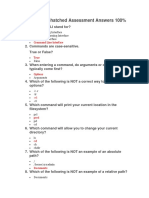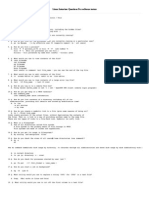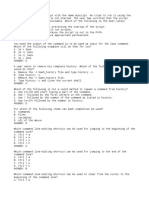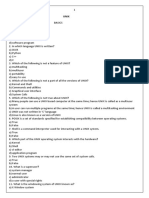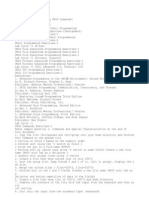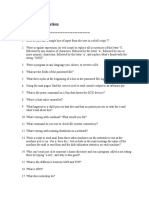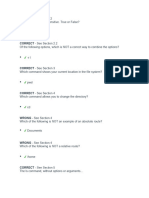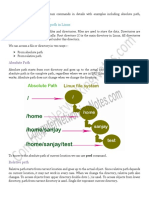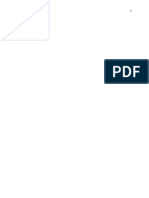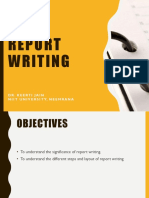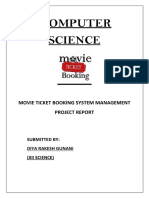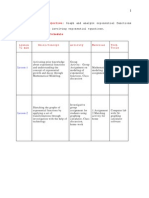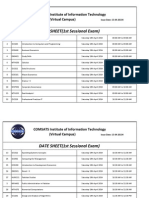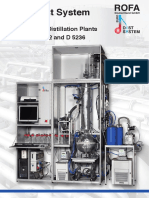NDG LINUX ESSENTIALS
TEST #6
1. Hidden files are files that begin with what character?
• A dash (-)
• A plus (+)
• A period (.)
• An asterisk (*)
2. What option for the ls command will display all files, including hidden files?
• -L
• -H
• -w
• -a
3. The top-level directory on a Linux system is represented as:
• /
• C:
• /root
4. Is the following path absolute or relative?
/etc/ppp
• Absolute
• Relative
5. Is the following path absolute or relative?
sysadmin/Documents
• Relative
• Absolute
6. Is the following path absolute or relative?
../../home/sysadmin
• Relative
7. The tilde (~) is used to represent:
• A user’s home directory
• Any two single characters
• The directory above the current working directory
• Nothing; it has no special meaning
8. Which of the following commands can be used to access the home directory of the
user “bob” while logged in as root? (choose two)
• cd /home/bob
• cd ~bob
• cd &&
• ~bob
9. The double dot (..) can be used with the cd command to represent:
• The directory above the current working directory
• Any two single characters
• A user’s home directory.
�10. The cd command by itself will take you to what directory?
• The system root directory
• None; it is not a valid command
• The directory above the current working directory
• Your home directory
11. What command will allow you to change your current working directory?
• chdir
• list
• cd
• ls
12. The double dot (..) can be used to represent the directory…
• …above the current directory.
• …below the current directory.
• …with any two single numbers.
• …above the current directory only when using the cd command.
13. The ls command without options or arguments…
• …lists the contents of the current directory.
• …prompts for a directory to list.
• …lists the contents of a user’s home directory.
14. The first character in a long listing (ls -l) indicates:
• The permissions
• If something is a file, directory, or symbolic link
• The owner
• The size
15. Which option for the ls command, when used in conjunction with the -
l option, will display human-readable sizes?
• -M
• -S
• -H
• -h
16. Which of the following commands will prevent any aliased options to
the ls command?
• /ls
• \ls
• %ls
• ls
17. The ls command color codes results by default.
True or False?
• True
• False
� 18. The command ls -S will sort files:
• By size, smallest to largest
• By number of symlinks, largest to smallest
• By modification date, newest to oldest
• By size, largest to smallest
19. When using the cp command, you must provide both a source and a
destination.
True or False?
• True
• False
20. Which option(s) can be used to prevent cp from overwriting an existing file?
(choose two)
• -n
• -N
• -z
• -i
21. The command rm -r will…
• prompt for each confirmation before deleting each file in a directory.
• remove only empty directories.
• generate an error; -r isn’t a valid option.
22. Which option can be used with the rm command to prompt before deleting?
• -i
• I
• -P
• A
23. The rm command can delete multiple files at once.
True or False?
• True
• False
24. Which of the following commands can be used to rename a file?
• name
• mv
• rn
• cp
25. The touch command can be used to: (choose two)
• Create new files
• Change a file’s name
• Update the time stamp of existing files
• Change ownership of a file
26. The whatis command is the same as man -w.
• true

